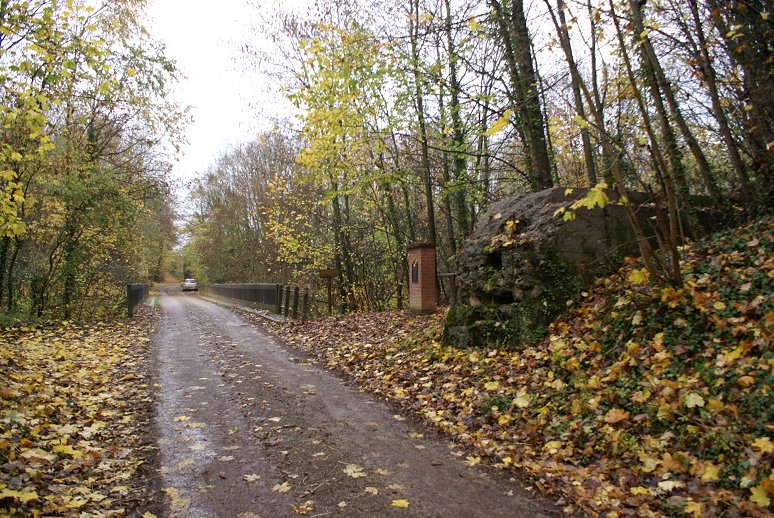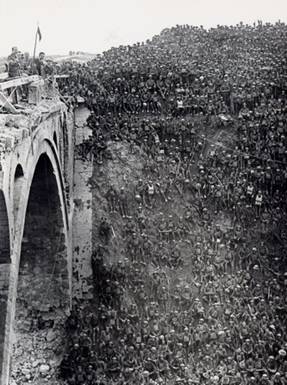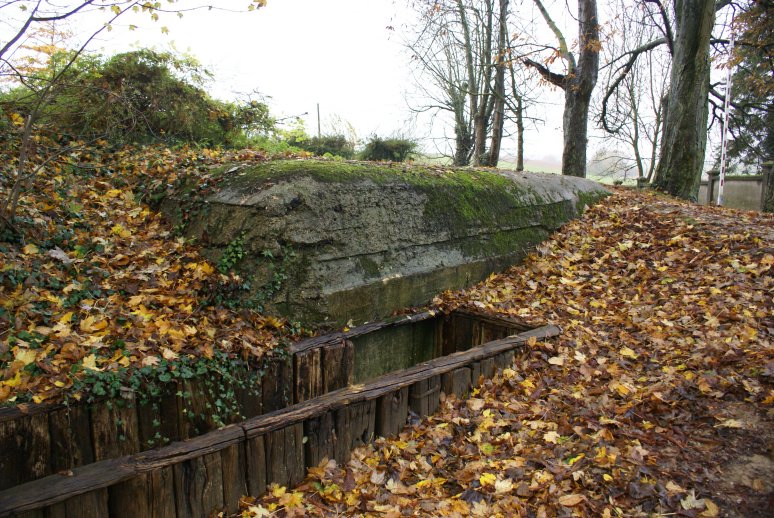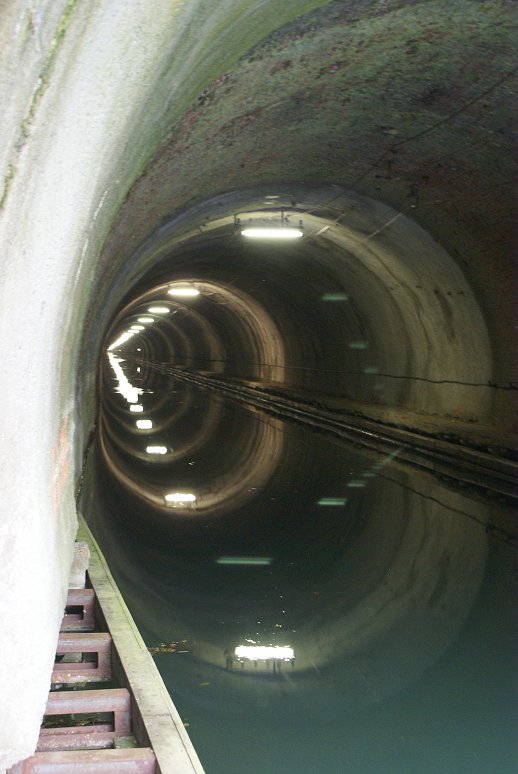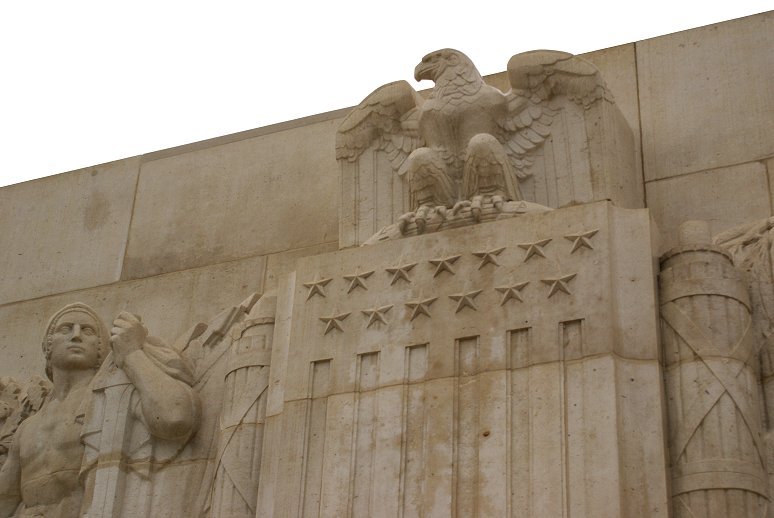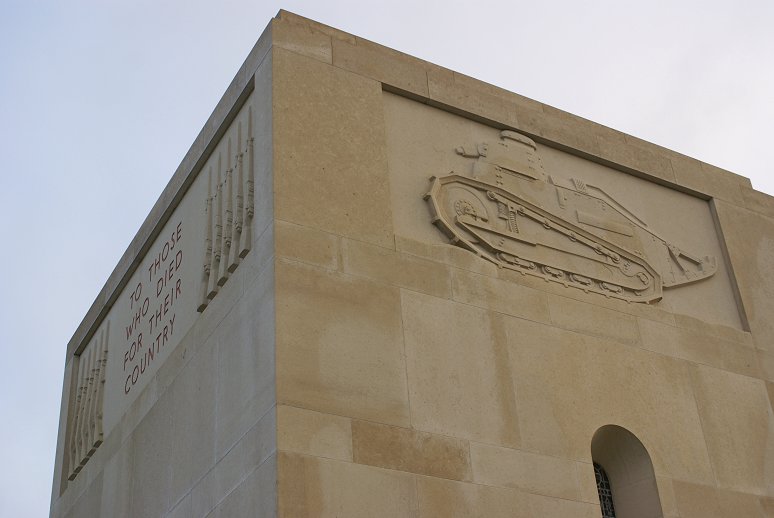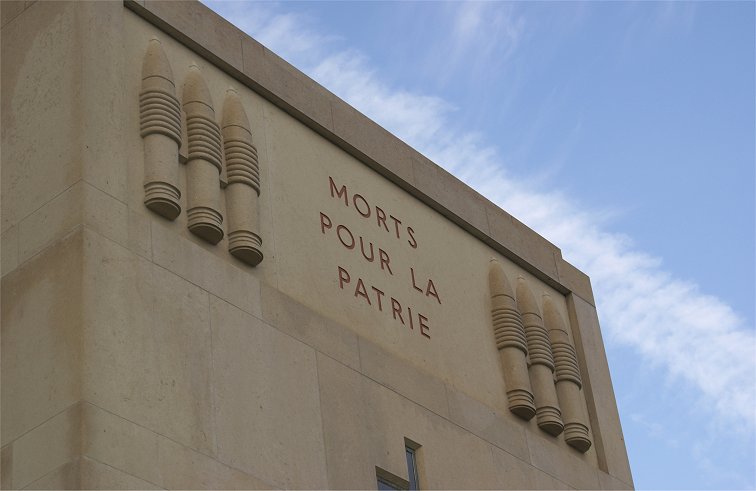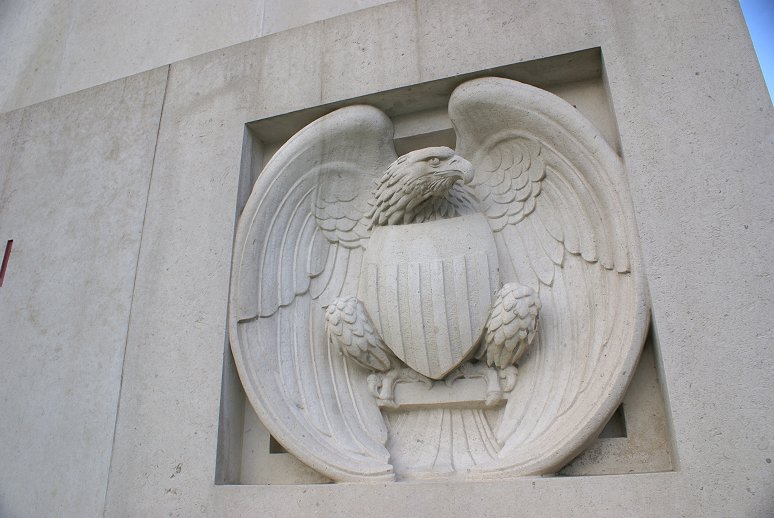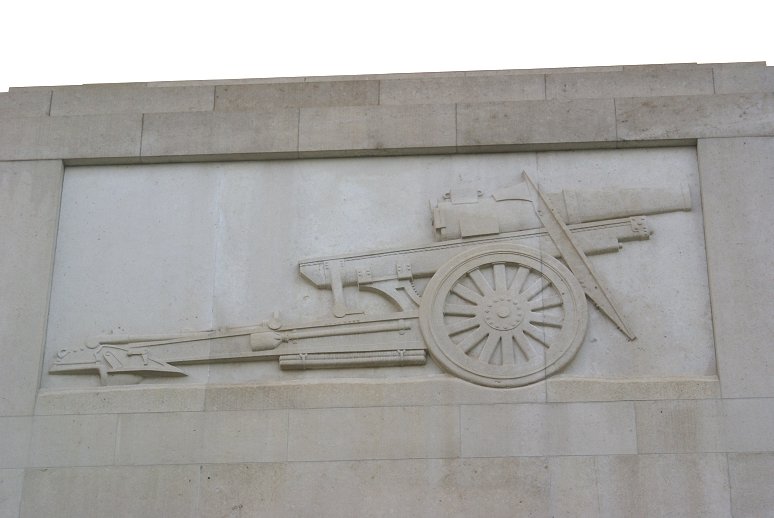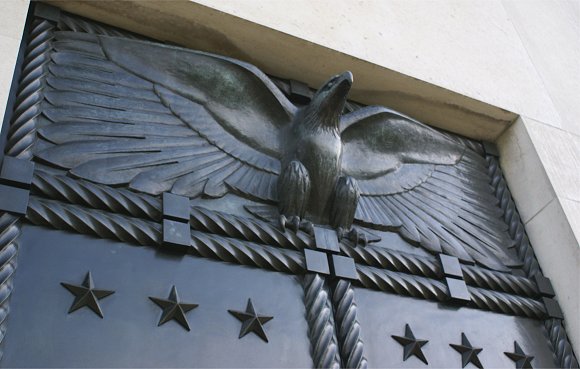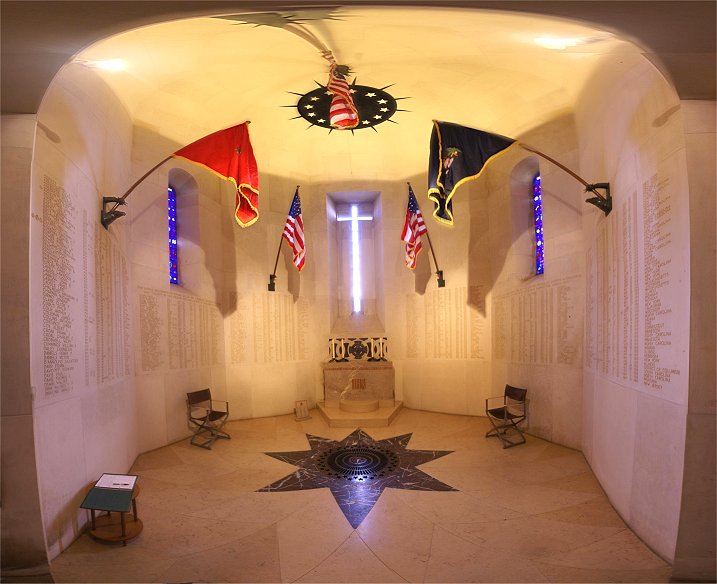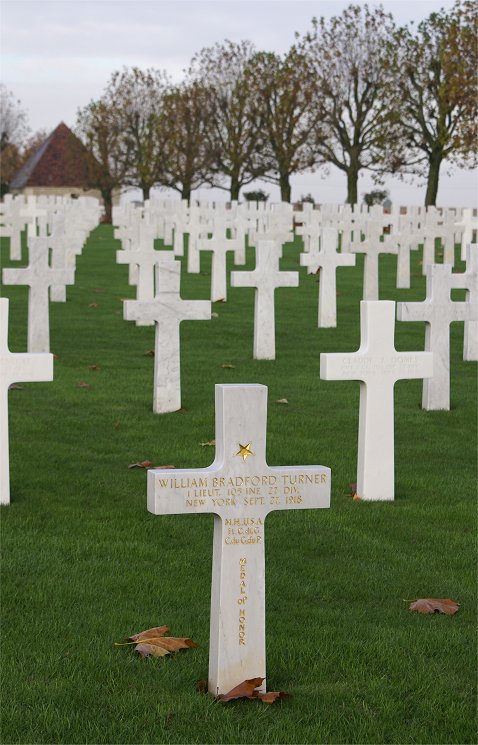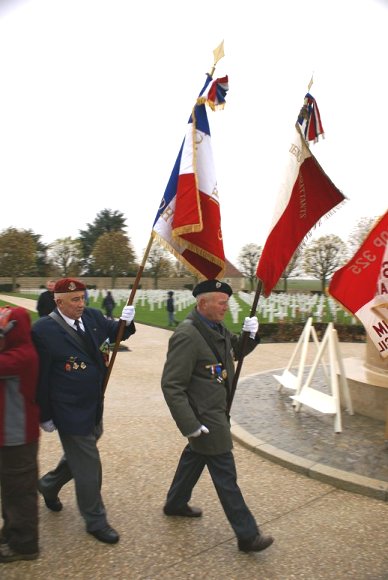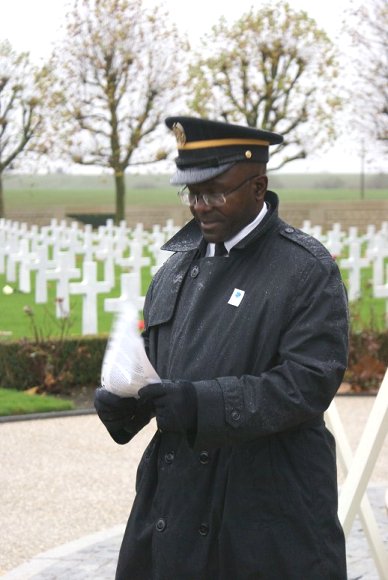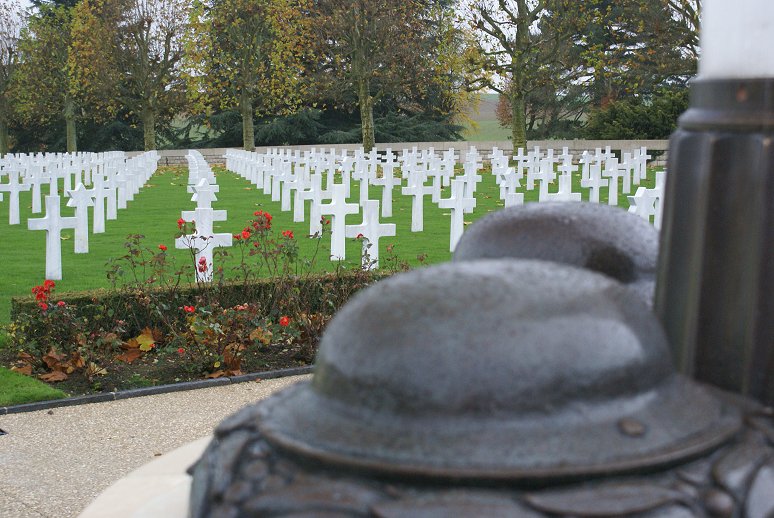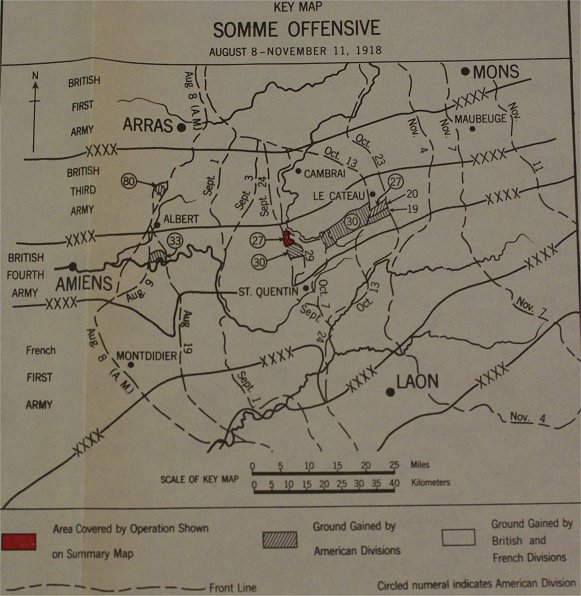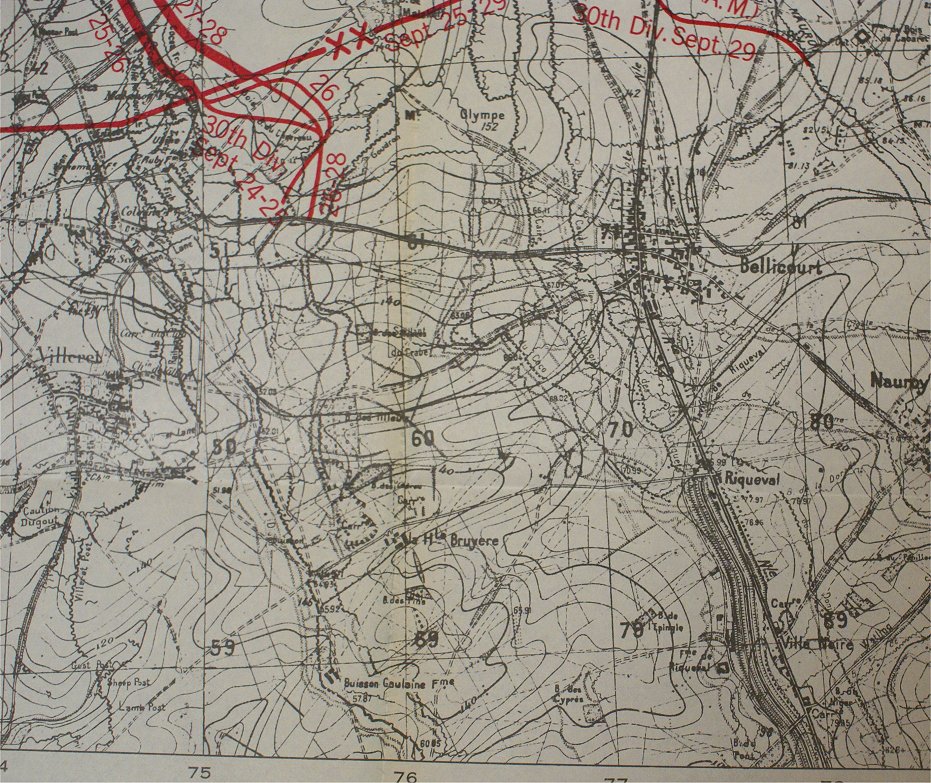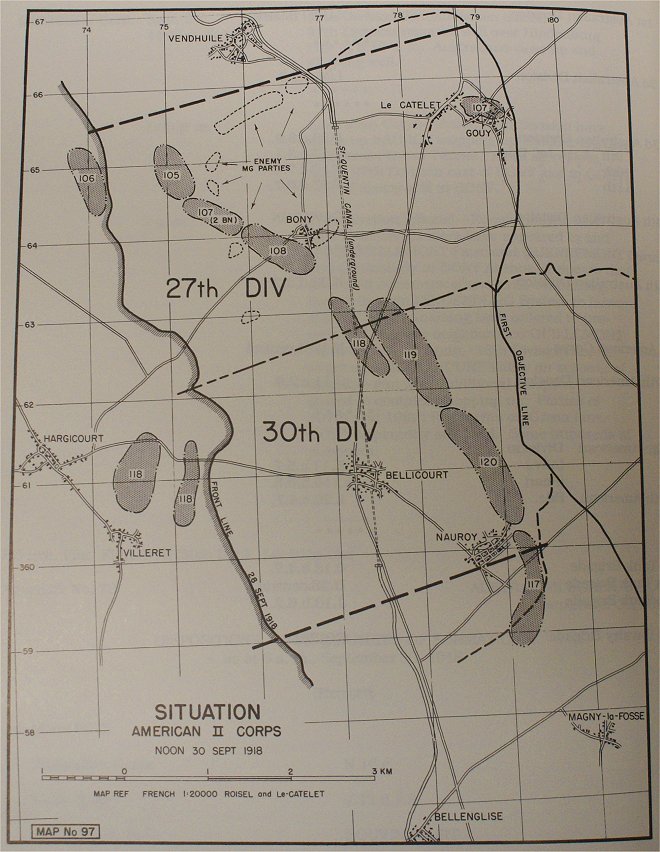The massive German attacks in the spring of 1918 came close
to breaking
through the Allied lines and winning the war. Instead, their
repulse
created a much longer line held by fewer, war-weary troops. A British
counterattack on August 8th turned the tide, and from then on, the
Allies were advancing. By late September, however, the
British were
approaching the Hindenburg Line, a strong, well planned defensive
position that had been built in relative leisure behind German earlier German front lines.
The defenses incorporated the St-Quentin Canal and its
steep banks.
A
portion of the canal went through four mile long tunnel, an
engineering
marvel when it was completed in 1810. It was at this point that
the
Hindenburg Line was most vulnerable, and it was here that the British
4th Army assigned the attached US 2nd Corps to attack. The II Corps was made up of the 27th and
30th Divisions, both National Guard units.
The British 46th Division attacked to their south. |
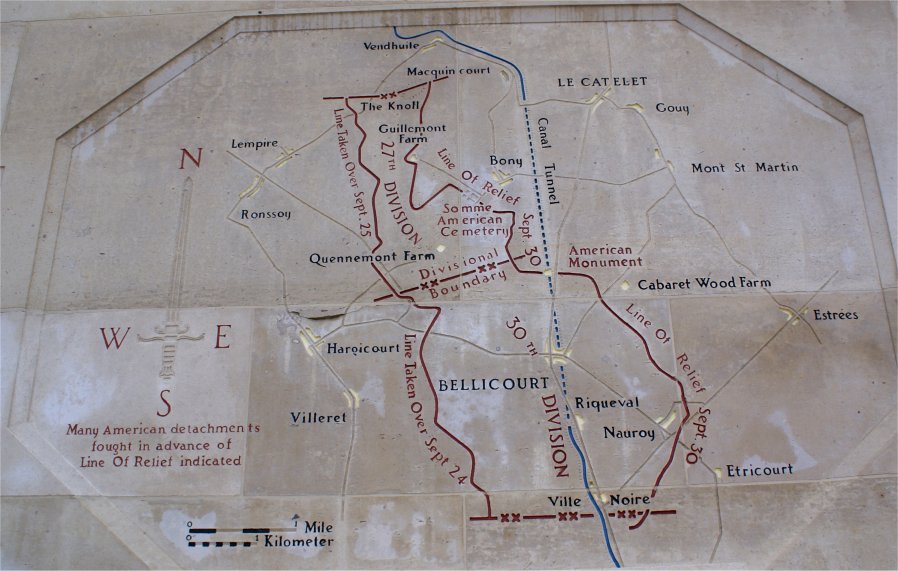 |

